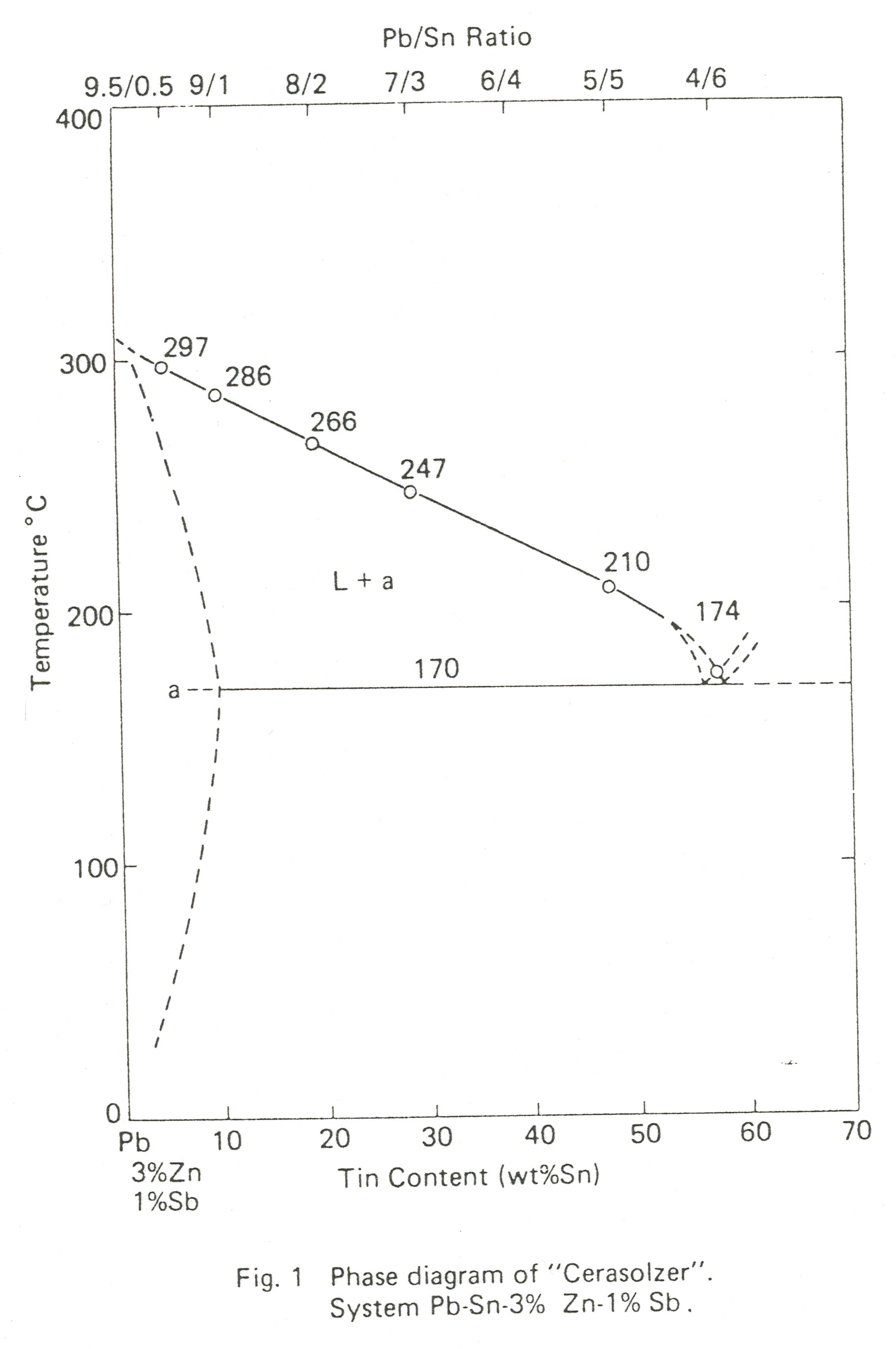
CERASOLZER ( Specially Formulated Solders)
Technical Information
One Page Summary: Cerasolzer Physical Properties (PDF-198KB) is here
1. Composition and characteristics of Cerasolzer
2. Materials to be bonded with Cerasolzer
During many years of extensively studying the techniques of glass-metal bonding, Asahi Glass Co., Ltd.
discovered that glass is amenable to direct soldering. After several years of research, its adhesive mechanism has been explained, leading to the development of a new solder: "Cerasolzer"Efforts are now being made to find more applications for Cerasolzer. In particular, this solder is used in the manufacturing of electrical parts, electrical materials and flat glass products because it provides a unique bonding technique that can take the place of commonly used silver baking, indium soldering, molybdenum-manganese, and resin bonding methods. Cerasolzer is becoming better known for its practical Merits.
1. Composition and characteristics of Cerasolzer
Composition: Cerasolzer #297, #246, #186
Main Composition: Pb, Sn, Zn, Sb

2) Cerasolzer #143--
Main Composition: Pb, Sn, Cd, Zn, Sb
(2) Cerasolzer Solder Characteristics
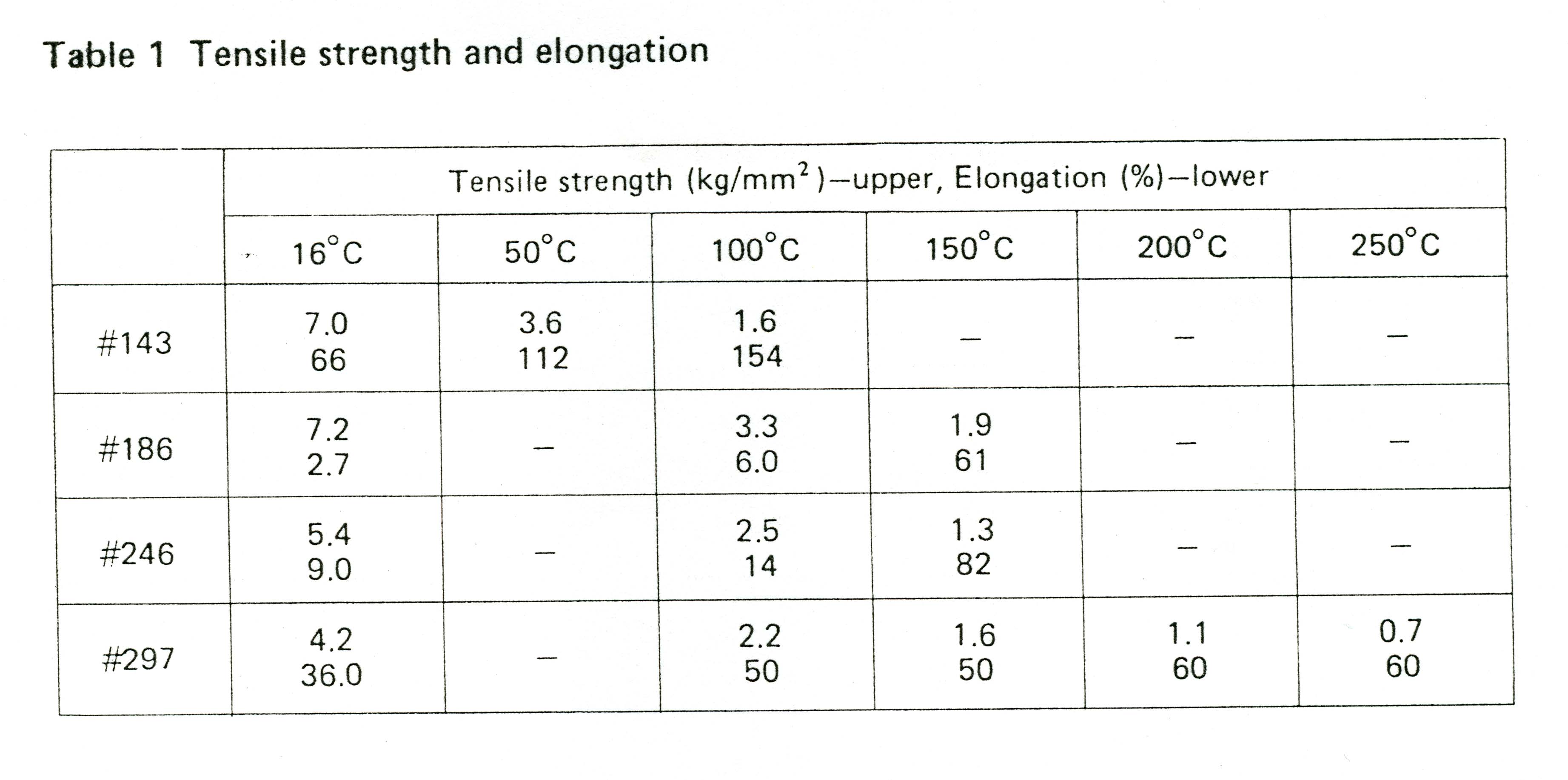
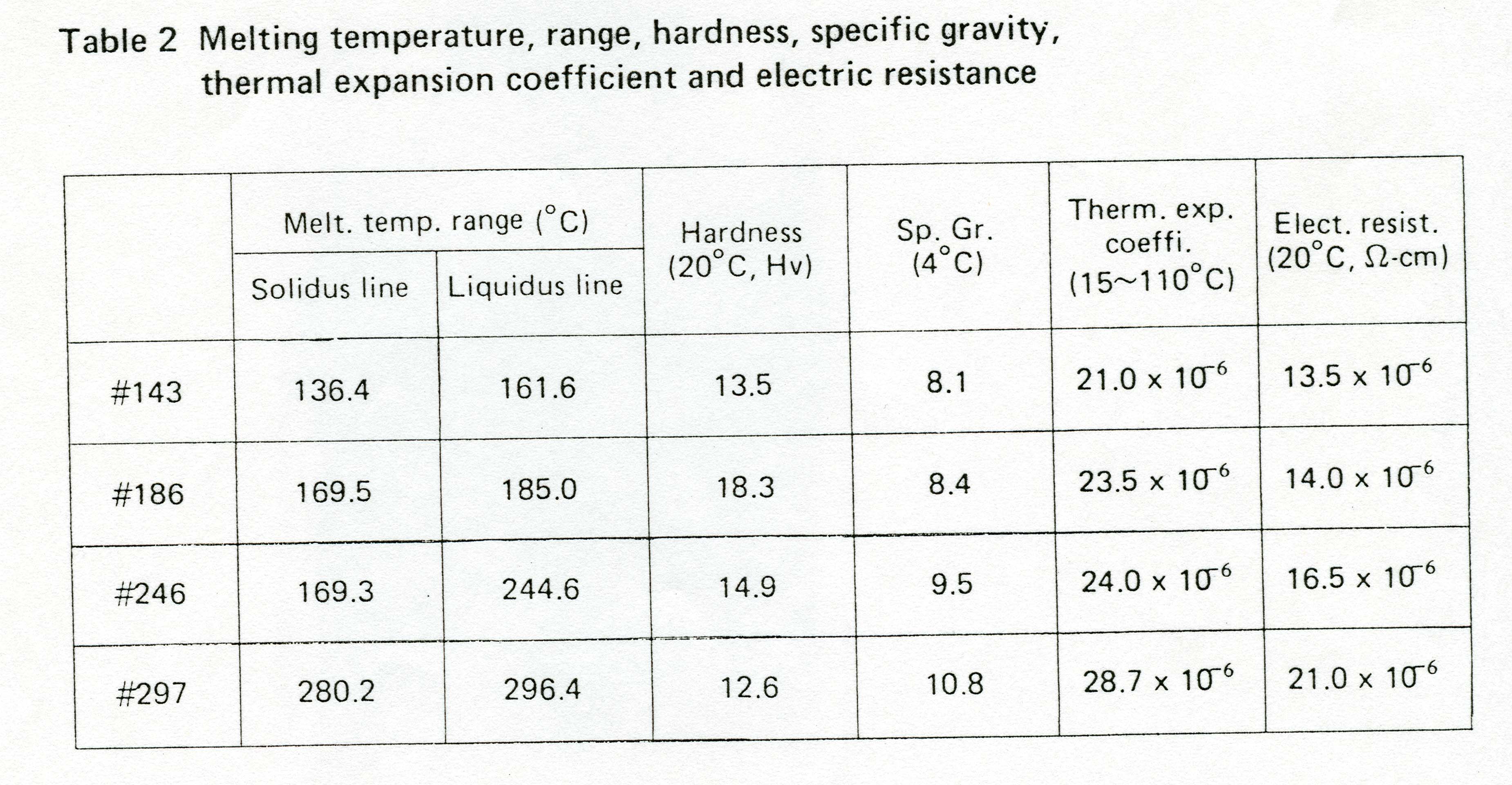
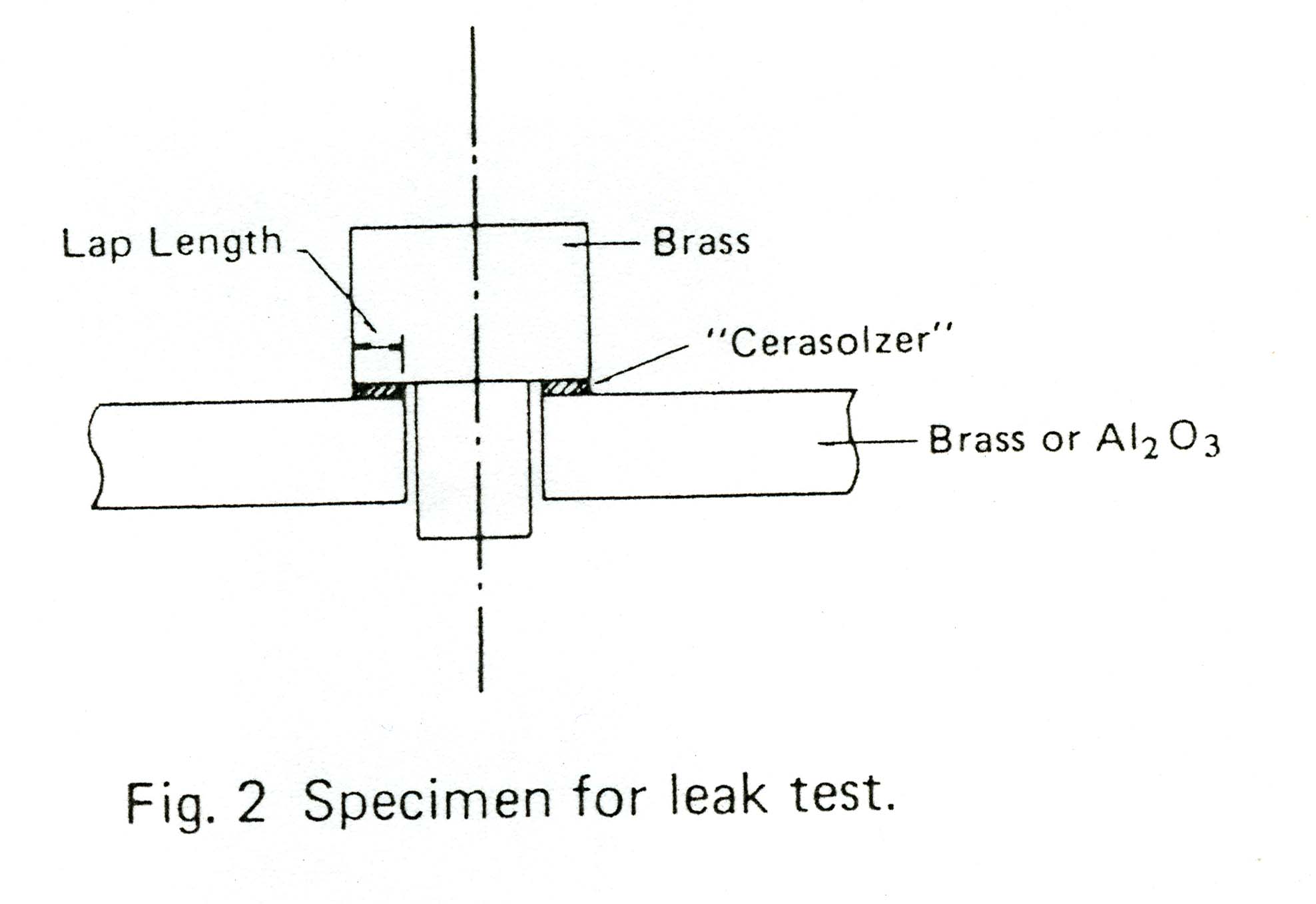
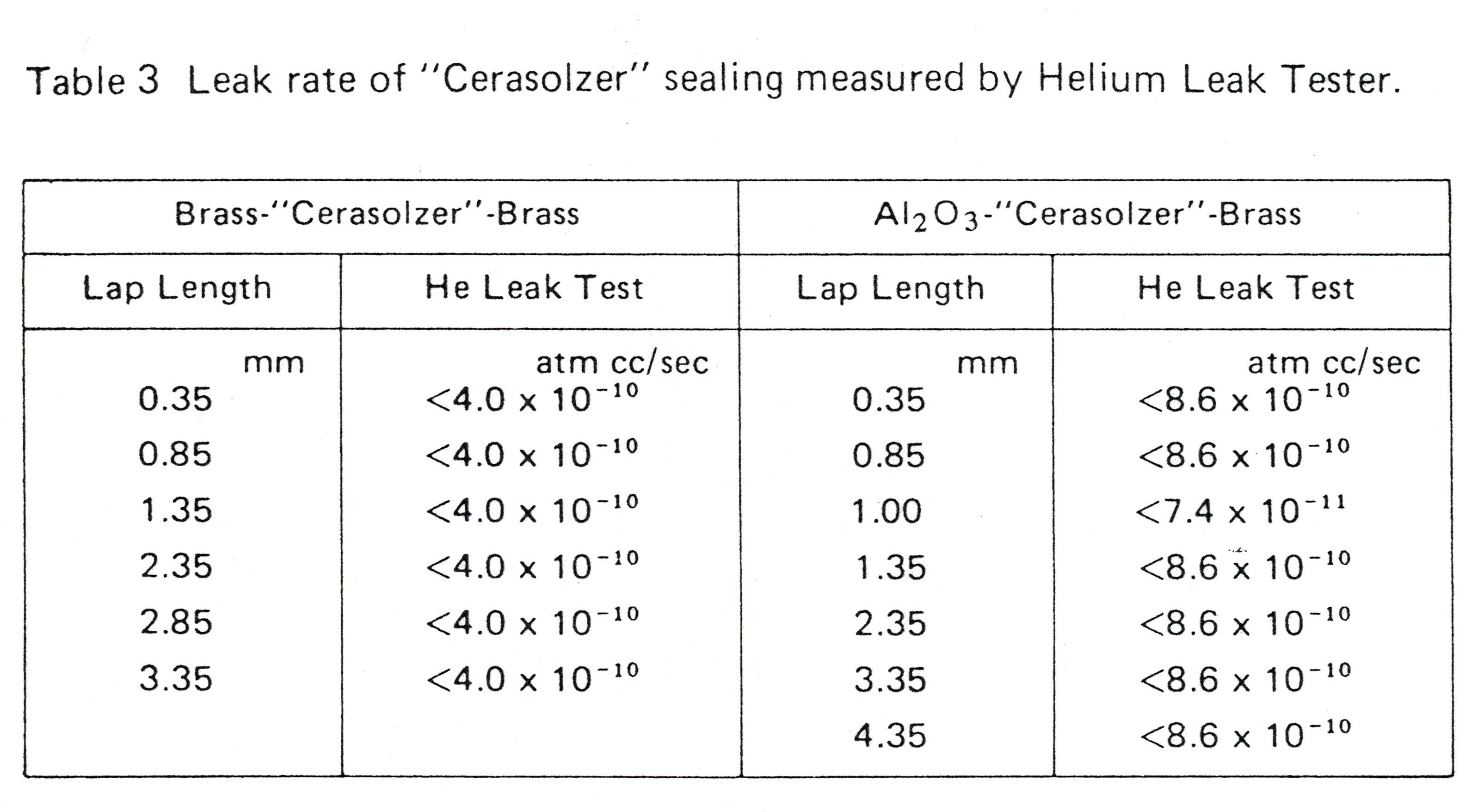
2. Materials able to be bonded with Cerasolzer
(1) Various kinds of glass Silica glass, crystal glass, electro-conductive coating glass, soda lime glass, etc.
(2) Various kinds of ceramics Magnesia, alumina, titania, forsterite,zircon, etc.
(3) Hard-to-solder metals Silicon, aluminum, stainless steel, tantalum, titanium, etc.
(4) Metal oxides
3. Bonding method & Bonding Strength
In coating glass, ceramics and metal oxide with Cerasolzer, it is necessary to keep complete
contact between Cerasolzer and the substrate by employing friction. to eliminate small
bubbles existing in the boundary zone between the surface of the substrate and the molten
Cerasolzer. This requirement is most effectively satisfied by applying ultrasonic vibration. For
example, upon application of this method to the molten Cerasolzer coated on a transparent glass plate, complete contact between Cerasolzer and the substrate is established to make the boundary zone look like the so-called "mirror surface".
Ultrasonic Cerasolzer bonding can be performed by three methods:(1) Two-step method
Cerasolzer is fed to the nose of a specially made ultrasonic tip and coated on glass, ceramics or metal oxide. Then, the metal fittings, lead wire, etc. are soldered on the surface of the Cerasolzer using ordinary solder. This method is convenient in making an airtight seal and to attaching large sized metal fittings, lead wire, etc.
(2) One-step method
While Cerasolzer is sandwiched in a slit between metal and glass or ceramics or metal oxide, ultrasonic vibration is applied directly to the metal. Bonding is performed within a very short time. This method is quite adequate for lead bonding on a display panel or on a resistor element.
(3) Dipping method
Cerasolzer is melted in a specific crucible which is equipped with an ultrasonic vibrator. While the molten Cerasolzer has a ripple on its surface caused by ultrasonic vibration, the specimen is dipped in. This method is of good use for whole surface coating with Cerasolzer. What is most important in bonding with Cerasolzer is the surface cleanliness of the substrate - glass, ceramics, metal oxide, etc. Such cleanliness does significantly affect the bonding performance of Cerasolzer. In particular, staining with organic substrate, resin, finger-prints, flux for ordinary solder, acid, alkali, powder, carbon, etc., must absolutely be avoided. Since Cerasolzer has a number of uses, the adhesive strength of Cerasolzer must be measurcd by the application. Here, the adhesive strength is described for the lead bonding to soda glass or In203 - coated glass performed by the one-step method. Physical and chemical factors should be noted they particularly affect the bonding performance
of Cerasolzer.
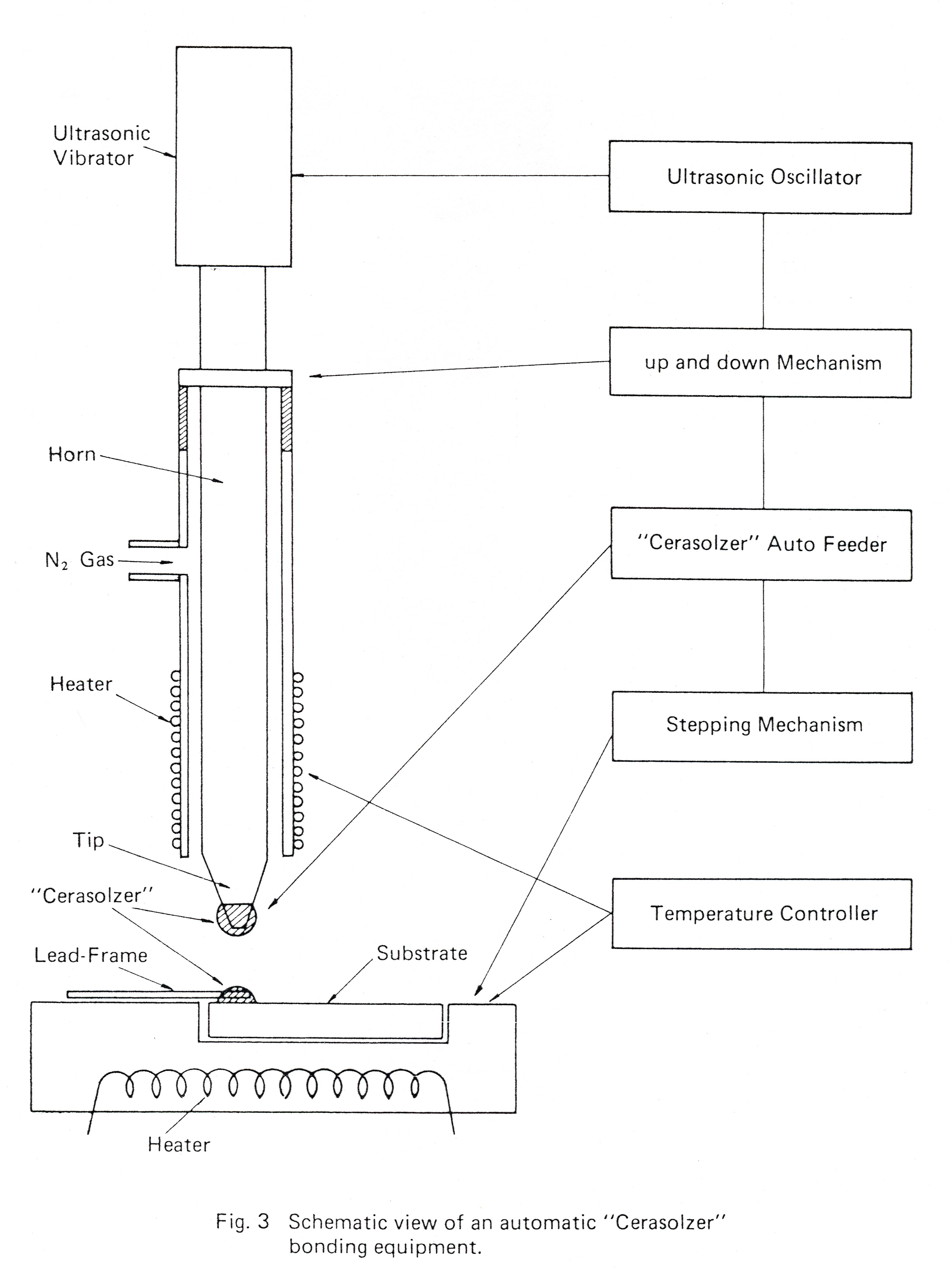
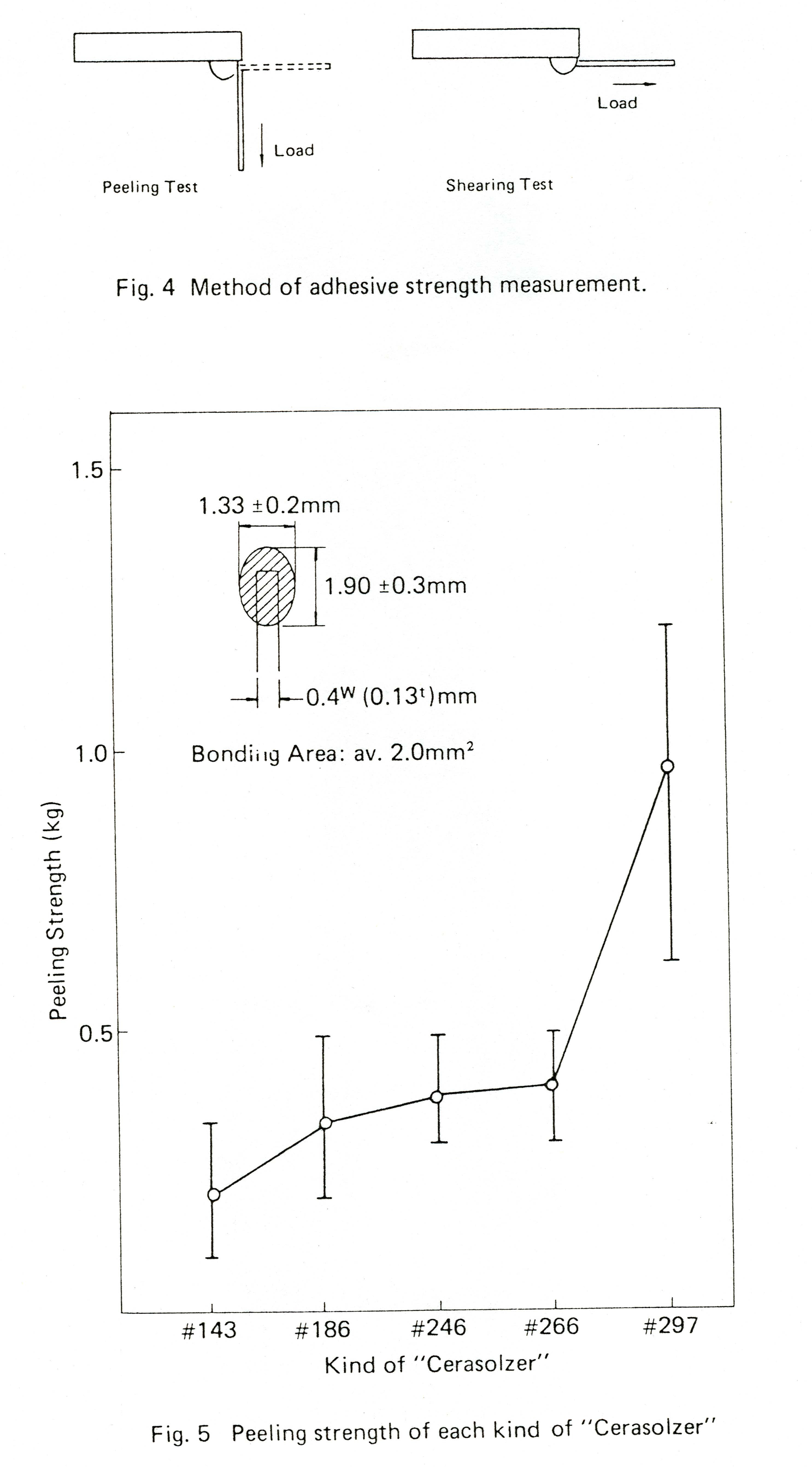
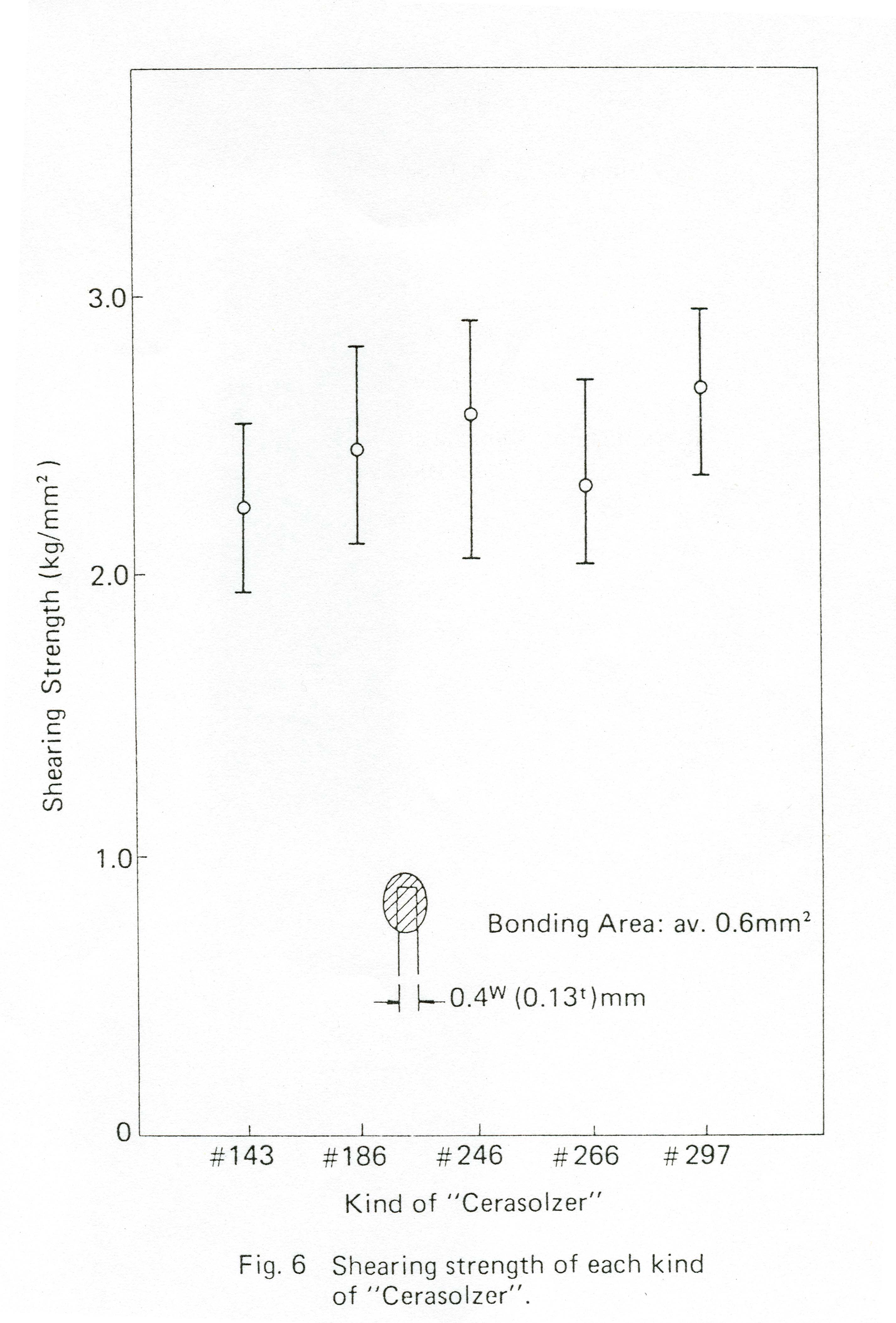
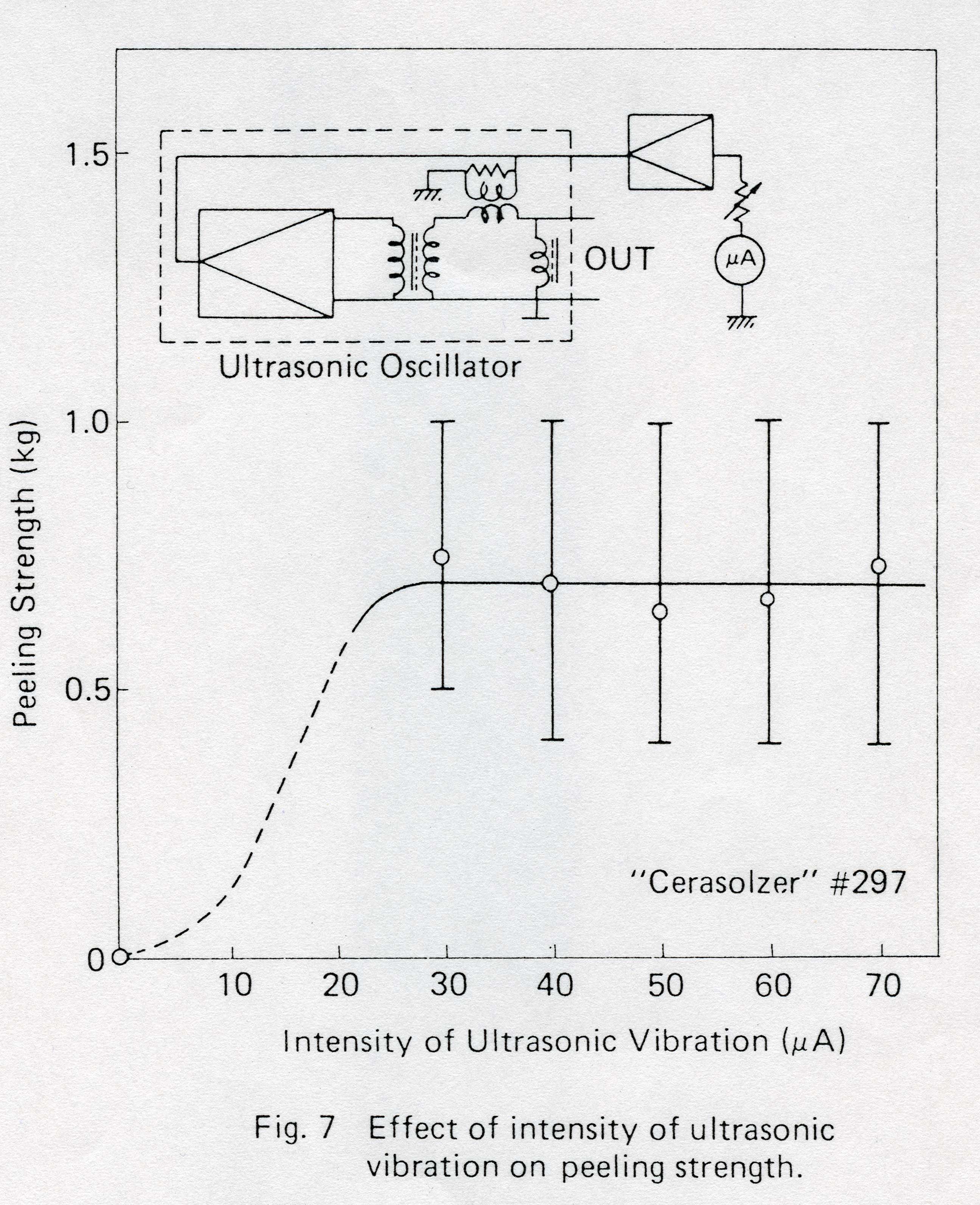
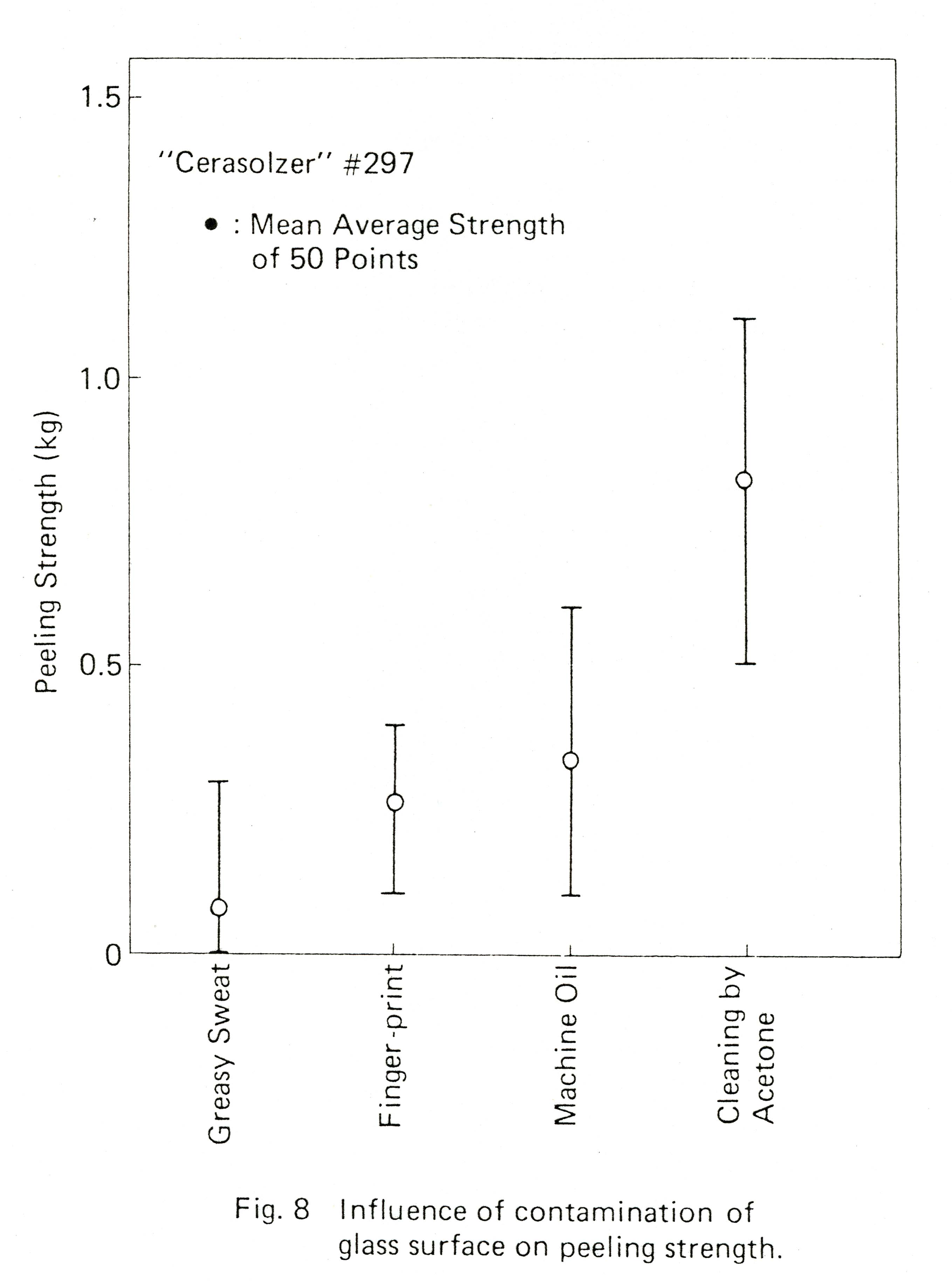
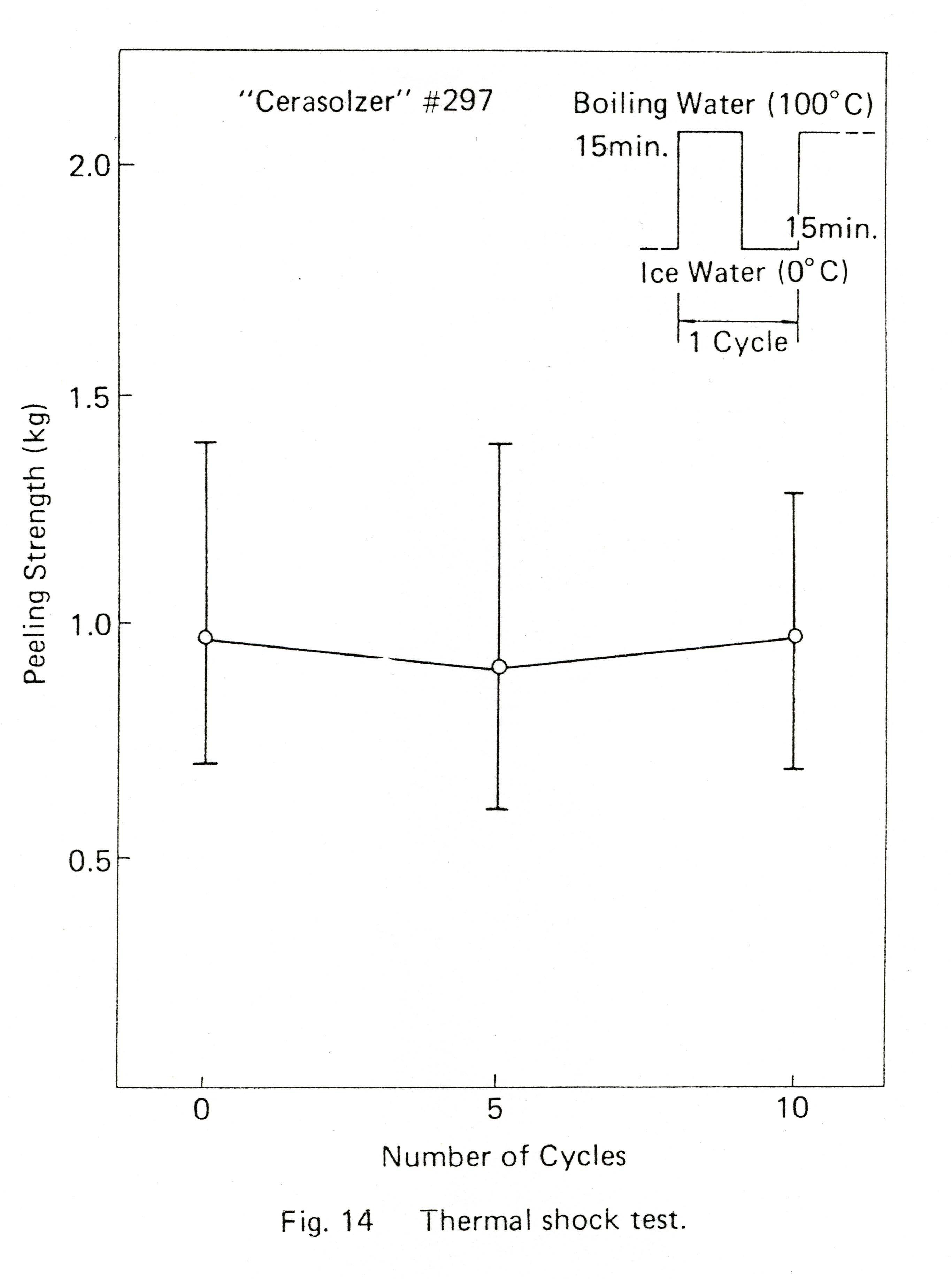
Although it is quite difficult to completely explain the mechanism of how Cerasolzer adheres to materials, these mechanisms are qualitatively understood as follows:
Since the adhesive property of Cerasolzer is essentially based upon the characteristics of
the alloy, the ultrasonic vibration is applied to help its bonding process. Cerasolzer contains a small amount of such elements as Zn, Ti, Si, Al, Be and Rare Earth which have a strong chemical affinity with oxygen. These metals, during the bonding process, combine with oxygen in air to form oxide, which is chemically bound to the surface of the glass, ceramics, metal oxide, etc. Thus, Cerasolzer bonding process proceeds under the liquid-solid reaction between oxides themselves. Such adhesive mechanism has been already confirmed in other areas of glass-metal bonding such as vacuum tube sealing. If oxygen is completely eliminated by substituting the air surrounding the bonding equipment with an inactive gas (e.g. nitrogen)the adhesibility of Cerasolzer will be lost. It has been experimentally found that the critical oxygen concentration for adhesibility is about 2%. A model of chemical binding between Cerasolzer and the substrate R binding between Cerasoizer is illustrated in Figure below.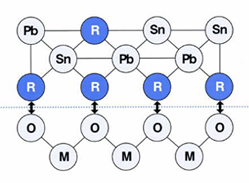
pplications of Ceresolzer
(1) Lead bonding on display panel
(2) Lead bonding on crystal oscillator
(3) Lead bonding on hybrid IC
(4) Bonding metal fittings on glass products
(5) Airtight sealing of electronic parts (high voltage resistor, high-voltage condenser,IC package)
(6) Electrode formation on electronic parts
=== Technical Manual for Cerasolzer ==
For more information, please contact
| Ceramic | Blades | Soldering | Dispensing | Contact | MSDS | Home |